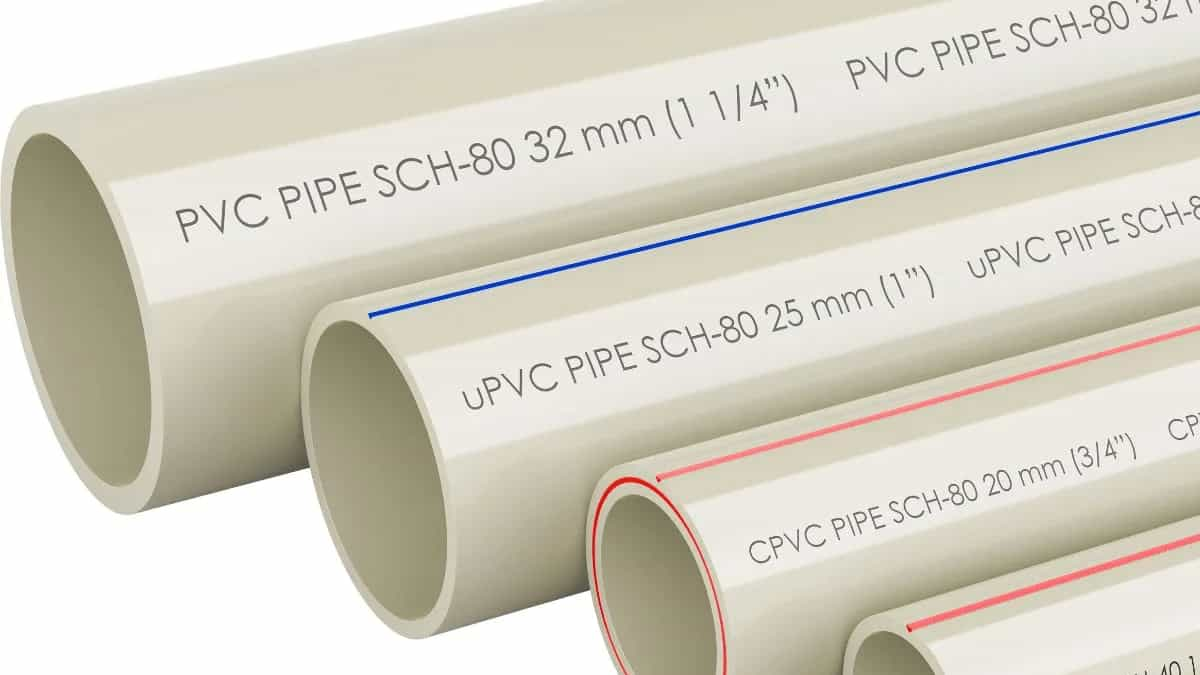uPVC (unplasticized polyvinyl chloride) pipes are rapidly becoming the preferred alternative to traditional metal pipes across residential, commercial, and industrial sectors. Their lightweight design, cost-effectiveness, and excellent durability make them an ideal choice for plumbing and infrastructure projects. Compared to metal pipes, uPVC pipes resist corrosion, require less maintenance, and offer a significantly longer lifespan.
Additionally, their non-reactive surface ensures there is no chemical contamination, making them safer for transporting potable water and chemical substances. Unlike metal pipes, which can rust or degrade over time, uPVC pipes retain their performance, even in humid or aggressive environmental conditions.
Primary Uses of uPVC Pipes
- Water Supply Systems
uPVC pipes are widely used in both urban and rural water distribution systems because they maintain water purity and prevent contamination. - Sewage and Drainage Networks
Due to their high chemical resistance, uPVC pipes are a go-to solution for waste management, including sewer systems and stormwater drainage. - Agricultural Irrigation
Farmers rely on uPVC pipes for drip and sprinkler irrigation systems as they are cost-effective, easy to transport, and can withstand high water pressure. - Electrical Conduits
uPVC pipes protect electrical cables from external damage and moisture, offering insulation and safeguarding wiring systems. - HVAC Systems
Ventilation and air conditioning systems utilize uPVC ducts for optimal airflow due to the material’s light weight and thermal stability.
Use of uPVC & PVC in Drainage and Sewage Systems
Both uPVC (unplasticized PVC) and PVC (polyvinyl chloride) pipes are used in different types of sewage and drainage systems, but they serve distinct purposes based on their material properties. Below is a comparison to clarify when to use each.
uPVC vs. PVC for Sewage and Drainage Networks
| Feature | uPVC (Unplasticized PVC) | PVC (Polyvinyl Chloride) |
|---|---|---|
| Flexibility | Rigid and less flexible | More flexible due to plasticizers |
| Corrosion Resistance | Excellent | Excellent |
| Temperature Tolerance | Limited (max ~60°C) | Slightly higher tolerance (~80°C) |
| Pressure Resistance | Moderate (suitable for low-pressure systems) | Better suited for moderate-pressure systems |
| Usage in Sewage/Drainage | Mostly in small residential or stormwater drainage | Used in municipal sewer systems and high-pressure networks |
| Chemical Resistance | Very high | High |
When to Use uPVC Pipes in Sewage/Drainage
- Stormwater and Rainwater Drainage Systems: uPVC pipes perform well in low-pressure stormwater applications.
- Residential Waste Systems: Ideal for homes, where wastewater is at ambient temperature and pressure is minimal.
- Ventilation Pipes: uPVC pipes are commonly used to release gases in sewage systems (vent stacks).
When to Use PVC Pipes in Sewage/Drainage
- Municipal Sewer Networks: PVC’s added flexibility makes it suitable for large-scale or underground sewer lines.
- High-Pressure Waste Systems: Better choice where there are pressure surges or variations.
- Industrial Waste: Suitable for drainage systems handling moderate-temperature fluids and chemicals.
Summary
- Use uPVC for domestic waste pipes, stormwater drainage, and non-pressurized systems.
- Opt for PVC in municipal sewer lines, industrial applications, or areas with fluctuating pressure.
Both materials resist corrosion and are low-maintenance, but the choice depends on the system’s pressure, temperature requirements, and flexibility needs.
Situations Where uPVC Pipes Should Be Avoided
- High-Temperature Environments
uPVC softens under extreme heat, making it unsuitable for hot water supply systems or industries dealing with high-temperature fluids. - High-Pressure Applications with Fluctuations
Though uPVC pipes can handle moderate pressure, sudden and extreme changes in pressure may cause the material to crack. - Underground Installations in Frost-Prone Areas
uPVC can become brittle in freezing temperatures, posing risks for underground water systems in extremely cold climates without proper insulation.
Advantages of uPVC Pipes
- Corrosion-Resistant
Unlike metal pipes, uPVC does not rust or corrode, even in highly saline or chemically aggressive environments. - Lightweight and Easy to Install
uPVC pipes are much lighter than metal pipes, reducing transportation and installation costs significantly. - Low Maintenance
Minimal upkeep is required since uPVC does not degrade, corrode, or accumulate mineral deposits over time. - Non-Toxic
uPVC is safe for carrying drinking water as it does not leach harmful chemicals or contaminants. - Cost-Effective
The initial installation costs are lower, and the reduced need for maintenance ensures long-term savings. - Excellent Chemical Resistance
uPVC pipes are suitable for transporting acids, alkalis, and other harsh chemicals without deterioration.
Drawbacks of uPVC Pipes
- Temperature Sensitivity
uPVC cannot handle very high temperatures, limiting its use in hot water applications. - Brittle in Freezing Conditions
Prolonged exposure to sub-zero temperatures can make uPVC pipes more prone to cracking or breaking. - Limited UV Resistance
Direct and prolonged sunlight exposure can cause discolouration and reduce the lifespan of uPVC pipes, requiring protective coatings or covers.
Precautions for Using uPVC Pipes
- Avoid High Temperatures
Ensure that uPVC pipes are not used to transport liquids or gases above 60°C to prevent warping or softening. - Insulate in Cold Environments
In areas with freezing temperatures, insulate uPVC pipes or bury them deep to avoid exposure to frost. - Protect from UV Rays
When installing outdoors, apply UV-resistant coatings or use shaded pathways to minimize degradation from sunlight. - Monitor for Pressure Variations
Use pressure-regulating valves in systems where there are frequent pressure changes to prevent pipe failure.
uPVC pipes are transforming the way we approach plumbing and infrastructure, offering a durable, low-maintenance, and cost-effective solution. By carefully selecting where and how they are used, we can maximize their benefits while mitigating their few drawbacks.

